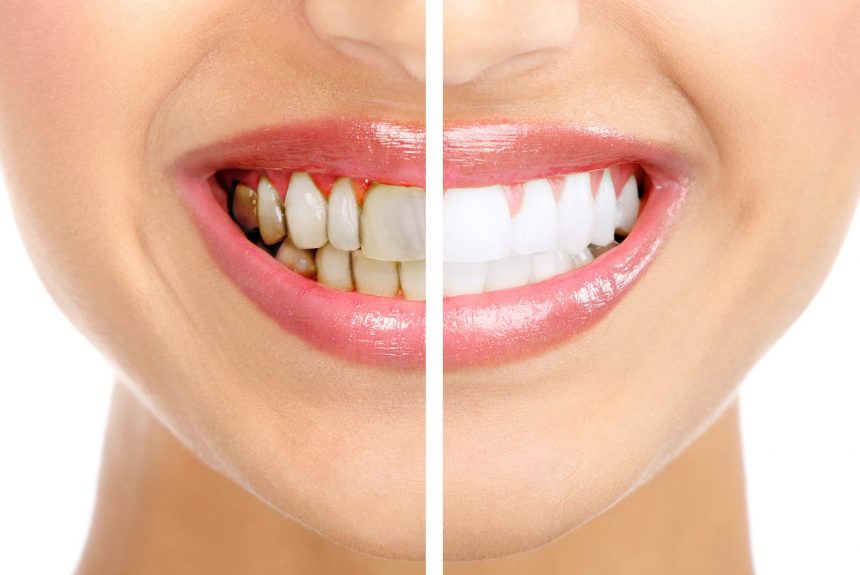Gum diseases are one of the most common diseases affecting one’s mouth. The greatest irony being, they present really few signs and symptoms to be noticed by the patient. The earliest signs include bleeding from the gums while brushing or eating, foul odor from the mouth or swollen gums. These signs require immediate attention. If left untreated, the signs worsen and cause more deleterious issues like loosening of teeth or maybe self exfoliation. To understand how these diseases can be treated, it is important to first understand how they occur.
Pathogenesis of gum diseases:
Initiation of gum diseases occurs soon as there is food deposition on teeth surface. Inability to clean the teeth leads to hardening of the soft plaque deposits on the tooth surface to a calcified mass called tartar. Once tartar forms, it becomes impossible for the patient to remove it himself with his brush. The plaque or tartar present on the tooth surface contain nothing but millions of bacteria that reside onto the tooth surfaces. These bacteria and their harmful toxins exert their ill effects on the gums and the underlying bone. They cause infection of gums which start bleeding with mild trauma to the gums and cause a foul odor. As the disease progresses, the severity of the symptoms increases. Bleeding can now occur even while eating or can be spontaneous. Advanced symptoms also include tooth mobility. Discomfort due to mobile teeth causes difficulty in eating and while speaking. Teeth can also drift away from their actual position in the jaw and cause spaces which were not previously present. This is referred to as pathologic migration. Spacing between teeth or irregularly placed teeth due to tooth movement are some of the serious complications of gum diseases. If these teeth are left untreated, they will eventually fall/exfoliate. Proper treatment done well in time can actually save your teeth from such ill consequences.
Scaling, flap surgery, bone grafts: the tooth saviors:
Once gum diseases start, they have to be treated in office. Many people try and follow some home remedies randomly seen over the internet. However such home remedies actually do more harm to the teeth and surrounding tissues than doing good. A proper treatment approach by a Periodontist, a gum specialist is a must in such cases. Based on the clinical condition, your gum specialist will advice you certain radiographs/ X-rays. These radiographs show the amount of bone left in the patients oral cavity. Based on the clinical and radiographic findings, the suitable treatment is designed for the patient. These treatment options consist of:
– Scaling
Commonly referred to as cleaning of the tooth surface, scaling is done to render the tooth surface free of all types of soft and hard deposits on the tooth surface. Scaling can be done with the help of two types of instruments, hand or motorized instruments. These instruments are used to remove the deposits on tooth surface and from inside the gum surface as much as possible. After scaling, certain topical medicines like a mouth wash, a desensitizer tooth paste and a gum astringent are prescribed to the patient. Your dentist will instruct you how to brush properly and how to maintain a good oral hygiene post scaling.
-Flap surgery
The plaque and tartar are not only present on the tooth surface, but also extend below the gum line. This particular area on the tooth surface is inaccessible for maintenance by the patient, since one cannot clean it using a tooth brush. Also, use of scaling instruments doesn’t access the region. Hence for proper visualisation and access to the area, flap surgery is done. In this surgery, a small amount of gum tissue is opened to gain access to the root and bone surface. Once accessed, the area is thoroughly cleaned for removal of all kind of deposits from the bone and root. The surfaces are then cleaned with anti-bacterial agents and then sutures are placed.
-Bone grafts
Gum diseases cause loss of bone tissue, which leads to a variety of clinical manifestations. Regeneration of this lost bone is one of the aims of periodontal therapy. Advances in medical and dental sciences have helped us create artificial materials that can be used to re-create bony structure which is lost. A variety of bone grafts are available for the purpose. After flap surgery, once placed, these materials form new bone and hence increase the tooth support. This in turn helps reduce tooth mobility.
At Dr Saurabh’s Dental clinic and implant centre, we perform all kinds of advanced gum care techniques to treat pyorrhea at any stage. Visit us if you notice any of the signs and symptoms of gum diseases mentioned above for a thorough gum examination by our expert. Visit us at Dr Saurabh’s Dental clinic and implant centre, Shop no-2, Vinayak residency, Keshav Nagar, University road, Udaipur.



Leave a Reply